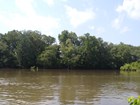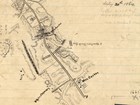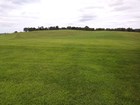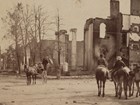In 1864, with US Gen. Ulysses Grant's army bogged down in front of Petersburg, Virginia, Confederate Gen. Robert E. Lee sought to take advantage. He ordered Gen. Jubal Early, in command of 14,000 soldiers, to launch a bold raid on the north.
-
Rock Creek Park
Article 1: The Fortifications of Washington

On July 11 and 12, 1864, the nation's capital came under attack. Guns boomed in the northern suburbs as Confederate troops under Jubal Early probed Union defenses. Read more
-
Cedar Creek & Belle Grove National Historical Park
Article 2: Battle of Cool Spring

The Confederates’ tactical victory at Cool Spring on July 18, 1864 meant little as US troops easily crossed the Shenandoah River in pursuit. But frustration with the war in the Valley soon caused Gen. Grant to rebuild the Army of the Shenandoah and put a new, aggressive officer in command, Gen. Philip Sheridan. Read more
-
Cedar Creek & Belle Grove National Historical Park
Article 3: Battle of Rutherford's Farm

Aware that a strong Federal force was advancing towards Winchester from the north and east, Confederate Gen. Jubal Early abandoned Winchester and retreated south. To give him time to evacuate hospitals and stores, Early ordered Gen. Stephen D. Ramseur’s division to occupy the northern defenses of the city. The Federal victory at Rutherford's Farm on July 20, 1864 proved temporary. Four days later, Early struck back with his entire army, at the Second Battle of Kernstown. Read more
-
Cedar Creek & Belle Grove National Historical Park
Article 4: Second Battle of Kernstown

The Second Battle of Kernstown on July 24, 1864 was the last significant Confederate victory in the Shenandoah Valley. After this latest in a series of Federal setbacks in the summer of 1864, Gen. Ulysses S. Grant put the aggressive Gen. Philip Sheridan in command of the new Army of the Shenandoah. Read more
-
Cedar Creek & Belle Grove National Historical Park
Article 5: Burning of Chambersburg

Confederate Gen. John McCausland's cavalry crossed the Potomac River and rode into Pennsylvania, demanding $100,000 in gold or $500,000 in cash from the citizens of Chambersburg. They refused, and on July 30, 1864, McCausland burned the entire town. The raid was payback for US Gen. David Hunter's burning of Lynchburg, Va. Read more
